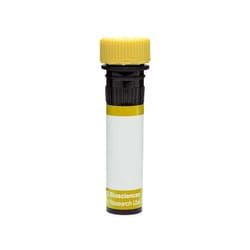7225548
BD Horizon™ IL-17A Mouse, anti-Human, RY586, Clone: N49-653, BD Horizon™
Mouse Monoclonal Antibody
Manufacturer: Fischer Scientific
The price for this product is unavailable. Please request a quote
Antigen
IL-17A
Applications
Flow Cytometry
Host Species
Mouse
Target Species
Human
Clone
N49-653
Conjugate
RY586
Regulatory Status
RUO
Primary or Secondary
Primary
Description
- Human IL-17A, also known as IL-17, is a proinflammatory cytokine that is encoded by the IL17A gene in chromosome 6
- IL-17A is produced as a disulfide-linked homodimer comprised of two mature 136-amino acid polypeptides
- It is a member of the IL-17 family of structurally related cytokines, designated IL-17A through IL-17F
- Activated memory T cells, especially Th17 cells (specialized IL-17A-producing CD4+ T cells distinct from Th1 and Th2 cells) produce IL-17 and provide protective immunity against pathogens
- Activated CD8+ T cells, γδT cells, NK cells and neutrophils can also be activated to produce IL-17A
- IL-17A binds to and exerts its biological activity through IL-17 receptors (IL-17R) that are expressed by a variety of target cells including fibroblasts, epithelial and endothelial cells, monocytes/macrophages and mast cells
- The ubiquitous IL-17R expression pattern may explain the broad tissue responsiveness to IL-17
- IL-17 induces stromal cells to secrete cytokines and chemokines involved in inflammatory and hematopoietic processes
- For example, IL-17 induces fibroblasts to produce IL-6, IL-8, G-CSF and express increased surface ICAM-1. The N49-653 antibody reacts with human IL-17A.
